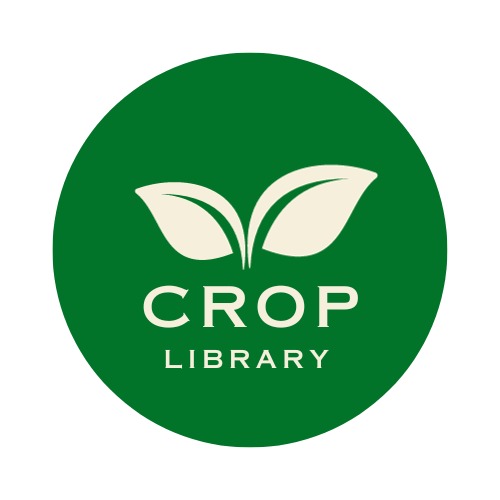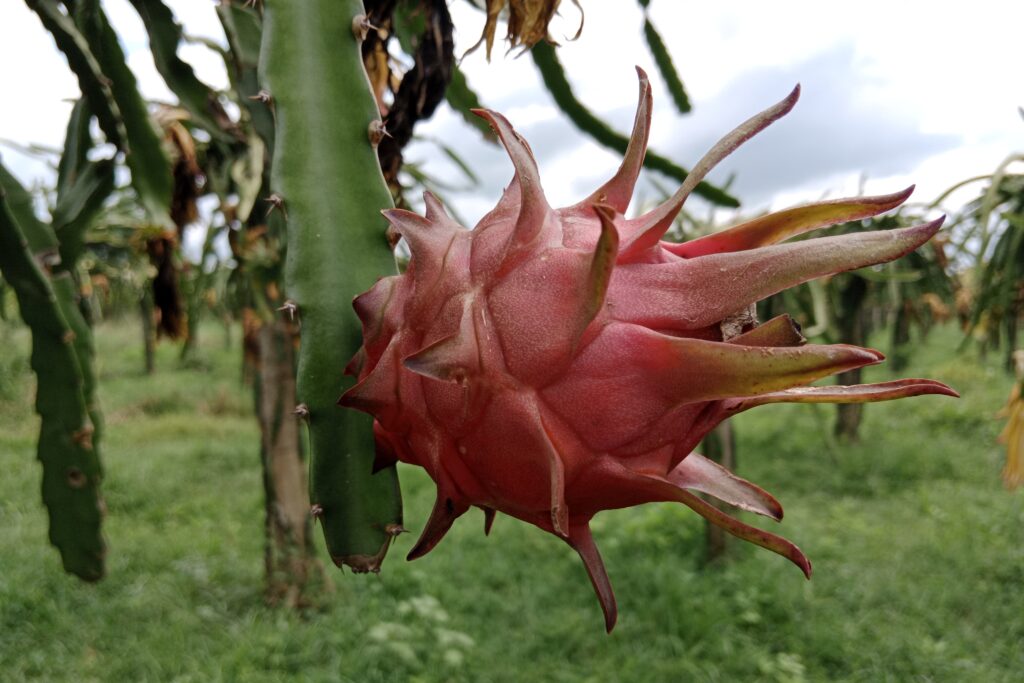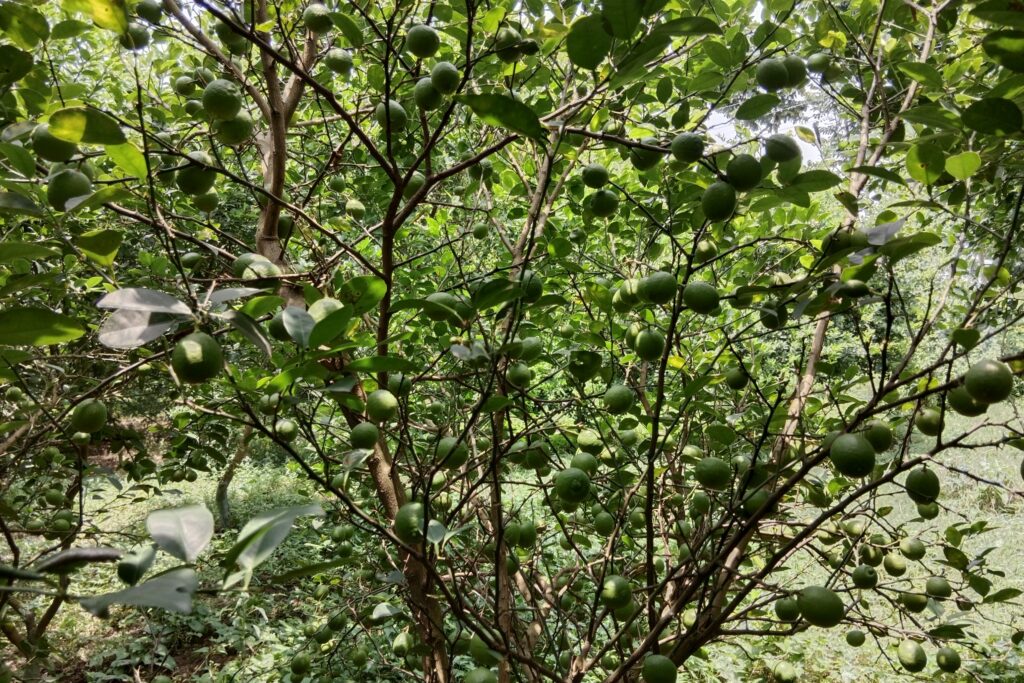7 Chemicals to Boost Mango Production
Mangoes, often referred to as the “king of fruits,” are a beloved tropical delight enjoyed by millions worldwide. However, achieving optimal mango production requires more than just favorable weather and soil conditions; it involves a strategic approach to cultivation, including the use of specific chemicals to enhance growth, yield, and fruit quality. In this article, we will discuss about the top 7 chemicals to boost mango production. From fertilizers and growth regulators to pest control agents, we’ll explore how each chemical contributes to healthier fruit set, larger harvests, and more flavorful mangoes.
These chemicals serve multiple purposes, including stimulating flowering, improving fruit retention, boosting overall tree health, and controlling pests and diseases. When applied judiciously and in accordance with recommended guidelines, they can significantly elevate both the quality and quantity of mango production. Below is a detailed exploration of seven essential chemicals that have been proven to play a transformative role in mango cultivation. These chemicals help ensure not only a bountiful harvest but also a consistent supply of high-quality fruits to meet growing market demands.
1.Potassium Nitrate (KNO₃)
Potassium nitrate, a highly effective nutrient source for mango cultivation, is widely regarded as a vital tool for enhancing fruit retention and improving overall yield. This dual-nutrient fertilizer provides both potassium and nitrate, which play essential roles in supporting critical physiological processes during the mango tree’s reproductive and fruit development stages.
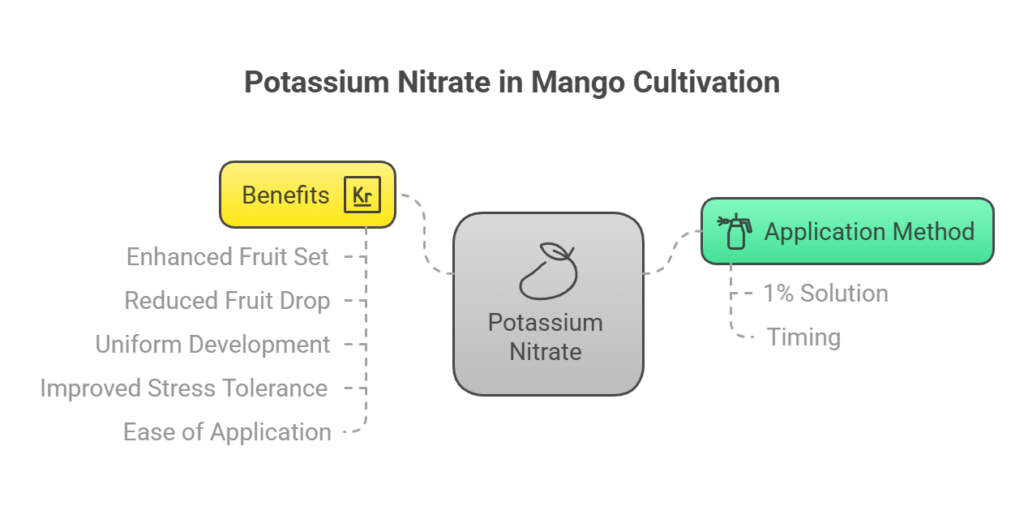
How It Works
Potassium nitrate is typically applied as a foliar spray, with a 1% solution being the most effective concentration for mango trees. The timing of application is crucial, as it targets key fruit growth stages, including the peanut, marble, and egg sizes. At these stages, the developing fruits are particularly susceptible to stress factors such as nutrient deficiencies, water imbalances, and hormonal fluctuations, all of which can lead to premature fruit drop. Potassium nitrate supplies readily available potassium, which strengthens the tree’s ability to manage these stresses, while the nitrate component supports nitrogen metabolism, enhancing overall growth and fruit set.
Benefits
- Enhanced Fruit Set: Potassium nitrate stimulates the development and retention of fruits on the panicle, significantly increasing the number of fruits that mature successfully.
- Reduced Fruit Drop: By alleviating stress and improving nutrient availability during critical growth stages, KNO₃ minimizes the incidence of premature fruit drop, a common challenge in mango production.
- Promotes Uniform Development: The balanced nutrient supply ensures that fruits develop evenly, resulting in improved size, shape, and quality across the harvest.
- Improved Stress Tolerance: Potassium helps regulate water use efficiency and strengthens the tree’s resilience against environmental stressors such as drought or high temperatures.
- Ease of Application: Foliar sprays of KNO₃ are easy to prepare and apply, making them a practical choice for farmers seeking cost-effective solutions to enhance productivity.
When used appropriately and combined with other good agricultural practices, potassium nitrate can become an indispensable tool for mango growers, ensuring a higher yield of premium-quality fruits suitable for both local markets and export.
2.Borax
Borax, a commonly used source of micronutrient boron, plays a pivotal role in the successful flowering and fruiting of mango trees. Boron is a critical element for plant development, particularly during reproductive stages, where it aids in cell division, pollen viability, and fruit formation. Despite being required in small quantities, boron deficiencies can significantly affect mango productivity, making borax a valuable tool for growers.
How It Works
Borax is applied as a foliar spray, typically at a concentration of 2–3 grams per liter of water. This application is timed during flowering and early fruit development stages to address the specific physiological needs of the tree. During flowering, boron improves pollen tube growth, ensuring successful fertilization and higher fruit set rates. In the fruiting stage, it supports cell wall formation and strengthens the structural integrity of developing fruits, reducing their susceptibility to environmental stressors that may cause premature fruit drop.
Benefits
- Enhanced Pollination: Boron is vital for the development and functionality of pollen grains and the growth of pollen tubes, leading to improved pollination success and higher fertilization rates.
- Improved Fruit Set: By promoting effective fertilization, borax increases the percentage of flowers that set and develop into fruits, enhancing overall productivity.
- Reduction in Flower and Fruit Drop: Regular borax application reduces the incidence of flower and fruit drop by ensuring that developing fruits receive the necessary nutrients to sustain their growth.
- Boosted Fruit Quality: Boron contributes to the uniform development of fruits, improving their size, shape, texture, and market value.
- Mitigates Boron Deficiency Symptoms: Correcting boron deficiencies prevents common issues like deformed fruits, poor fruit retention, and stunted growth, ensuring healthy tree development.
Usage Tips
- Borax should be dissolved thoroughly in water before application to prevent uneven distribution or foliar burn.
- The timing of the spray is crucial: aim for pre-flowering and post-flowering stages to maximize benefits.
- Avoid over-application, as excessive boron can lead to toxicity, harming the tree and reducing yield.
Also Read About: Mango Farming Comprehensive Guide
3.Urea (46% Nitrogen)
Urea, a widely used nitrogen fertilizer containing 46% nitrogen by weight, is essential for mango tree growth and productivity. Nitrogen, a macronutrient, is a critical component of amino acids, proteins, and chlorophyll, all of which are vital for the physiological and reproductive processes in mango trees. During the flowering stage, adequate nitrogen levels are crucial for forming healthy flowers, supporting fertilization, and ensuring robust fruit development.
How It Works
Nitrogen supplied through urea directly supports the metabolic and physiological activities of the mango tree. When applied as a foliar spray or soil amendment, urea ensures an adequate nitrogen supply, promoting the development of flower buds and increasing the number of flowers produced. Nitrogen also plays a role in enhancing pollen viability by supporting energy-intensive processes like pollen germination and tube growth, which are essential for successful fertilization. Furthermore, nitrogen improves the tree’s vigor and overall health, enabling it to sustain the energy demands of flowering and fruiting stages.
Benefits
- Improved Flower Bud Formation: Urea application stimulates the production of more flower buds, increasing the potential for fruit development.
- Enhanced Pollination and Fertilization: Nitrogen contributes to the viability of pollen grains, ensuring successful fertilization and better fruit set rates.
- Reduction in Flower Drop: Adequate nitrogen levels reduce nutrient stress, preventing premature flower drop and supporting the retention of flowers until fruit set.
- Better Fruit Set: By fostering strong reproductive processes, nitrogen ensures a higher conversion rate of flowers into fruits, improving yield potential.
- Overall, Tree Health: Nitrogen strengthens the mango tree’s vegetative growth, ensuring that the canopy can effectively support fruiting stages with sufficient energy and resources.
Application Guidelines
- Foliar Spray: Prepare a 1–2% urea solution (10–20 grams of urea per liter of water) for foliar application during the pre-flowering and flowering stages.
- Soil Application: Apply urea to the soil around the tree’s drip line to maintain consistent nitrogen availability throughout the flowering and fruiting stages.
- Timing: Apply nitrogen during critical growth phases, especially before and during flowering, to maximize benefits.
- Precaution: Avoid over-application, as excessive nitrogen can lead to vegetative growth at the expense of flowering and fruiting.
Complementary Practices
Combining urea application with other nutrients like potassium and micronutrients such as boron can further enhance flower and fruit development. Balanced fertilization, tailored to the tree’s specific growth stage, ensures optimal productivity and fruit quality.
When used appropriately, urea is a powerful tool for improving mango tree flowering and fruiting, ensuring higher yields and healthier trees.
4.Auxin
Auxin, a naturally occurring plant hormone, is essential for regulating various aspects of plant growth and development, particularly during flowering and fruiting. In mango cultivation, auxin application is a proven strategy for enhancing fruit retention and promoting robust fruit development, addressing common challenges like premature fruit drop and inconsistent yields.
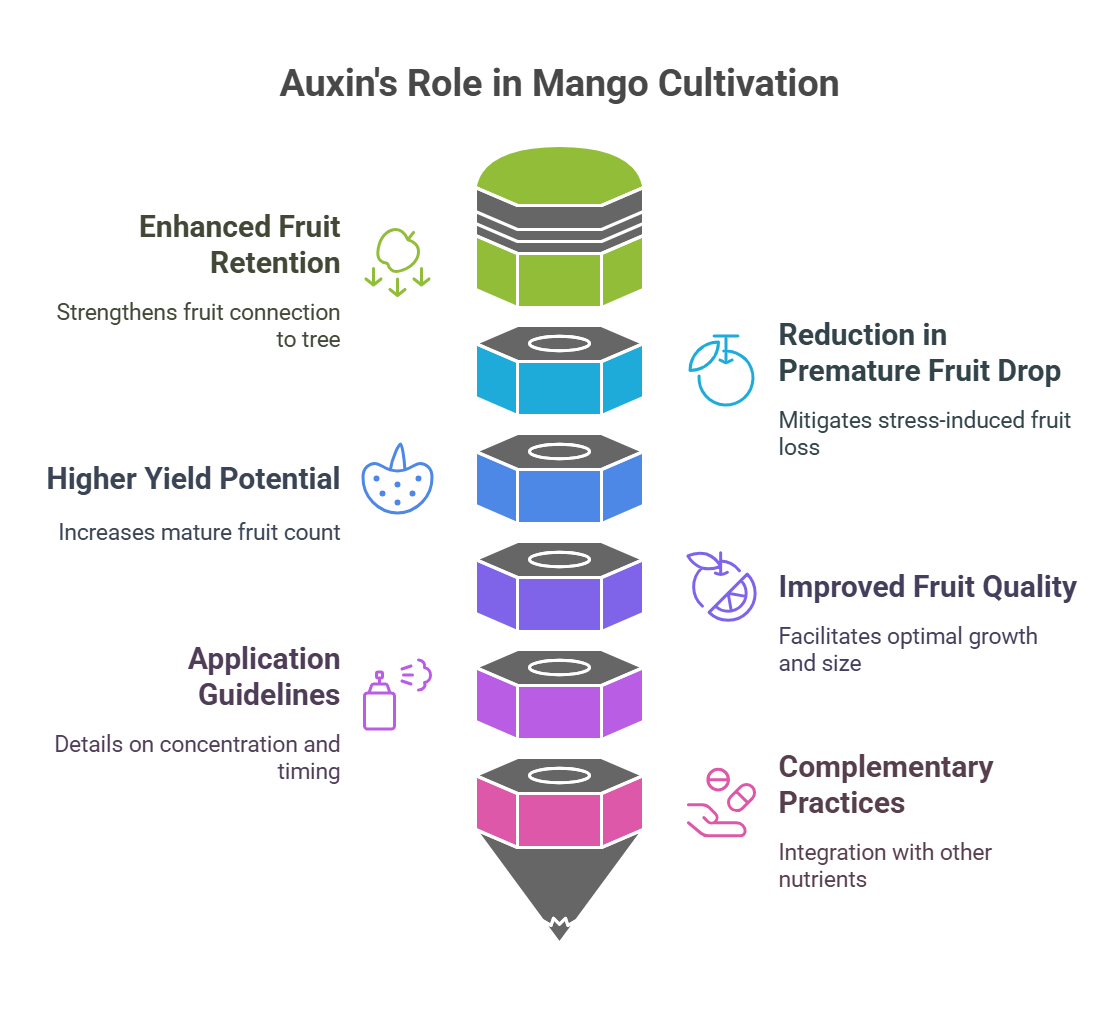
How It Works
Auxins influence cellular processes such as elongation, division, and differentiation, which are crucial during the flowering and fruit development stages. When applied as a foliar spray at a concentration of 10–20 ppm (parts per million), auxins stimulate the growth of fruit tissues by promoting the development of vascular connections between the fruit and the tree. This ensures an adequate flow of nutrients and water to the developing fruits. Auxins also help maintain hormonal balance within the tree, reducing the likelihood of premature fruit abscission caused by stress factors like nutrient deficiencies, water imbalances, or hormonal fluctuations.
Benefits
- Enhanced Fruit Retention: Auxin application strengthens the connection between the fruit and the tree, preventing the natural shedding of immature fruits.
- Reduction in Premature Fruit Drop: By mitigating stress-induced abscission, auxins help retain a higher percentage of fruits until maturity, ensuring better yield.
- Higher Yield Potential: The combined effects of increased fruit retention and reduced drop result in a more significant number of mature fruits, boosting overall productivity.
- Improved Fruit Quality: Auxins indirectly contribute to better fruit size and uniformity by facilitating optimal nutrient transport and growth regulation during the development phase.
Application Guidelines
- Concentration: Prepare a foliar spray with auxins at a concentration of 10–20 ppm (e.g., dissolve 10–20 milligrams of auxin per liter of water).
- Timing: Apply auxin sprays at critical stages, such as the flowering phase and shortly after fruit set, to maximize their retention benefits.
- Frequency: Depending on environmental and tree-specific conditions, multiple applications may be required to ensure sustained hormonal support throughout the fruiting period.
- Precaution: Avoid excessive auxin concentrations, as they may cause adverse effects, such as distorted growth or reduced effectiveness.
Complementary Practices
To achieve the best results, auxin treatments can be combined with other growth regulators or nutrients like potassium and boron, which complement auxin’s role in fruit retention and development. Additionally, maintaining good irrigation and soil health practices ensures the tree is well-supported during critical reproductive stages.
5.Calcium Nitrate (Ca(NO₃)₂)
Calcium nitrate is a vital fertilizer in mango cultivation, supplying both calcium and nitrate nitrogen, two essential nutrients for tree health and fruit development. Calcium plays a critical role in maintaining the structural integrity of fruit tissues, ensuring better quality and resilience against physical and physiological stressors. Its dual-nutrient composition also supports nitrogen metabolism, enhancing overall tree vigor and productivity.
How It Works
Calcium nitrate contributes to the strength and stability of cell walls in mango fruits, reducing the risk of cracking and physical damage during growth, harvesting, and post-harvest handling. Calcium fortifies the fruit’s epidermal layers, making them less prone to cracking caused by environmental stress, such as sudden changes in humidity or temperature. Additionally, it enhances nutrient transport within the tree, ensuring that developing fruits receive sufficient calcium for uniform growth. Nitrate nitrogen supports photosynthesis and protein synthesis, indirectly promoting healthy fruit development.
When applied as a foliar spray or soil amendment, calcium nitrate significantly improves the structural quality and marketability of mango fruits.
Benefits
- Improved Fruit Firmness: Calcium strengthens cell walls, ensuring firmer fruits that are less susceptible to bruising and physical damage during transportation.
- Reduced Fruit Cracking: By enhancing tissue elasticity and integrity, calcium nitrate minimizes fruit cracking, a common issue caused by rapid water uptake or environmental stress.
- Enhanced Shelf Life: Calcium delays the breakdown of cell walls during storage, prolonging the fruit’s freshness and reducing post-harvest losses.
- Better Marketability: Firmer, crack-free fruits with extended shelf life are more appealing to consumers and command higher market prices.
- Overall Tree Health: The nitrate component boosts tree vigor by supporting nitrogen metabolism, ensuring that the tree remains healthy and productive.
Application Guidelines
- Foliar Spray: Apply a 0.5–1% solution (5–10 grams per liter of water) during fruit development stages for direct nutrient absorption by the fruit.
- Soil Application: Use calcium nitrate as a soil amendment around the tree’s root zone to maintain consistent calcium and nitrogen availability throughout the growth period.
- Timing: Apply during key growth phases, particularly when fruits are developing and susceptible to cracking or quality deterioration.
- Precaution: Avoid excessive application, as an imbalance in calcium or nitrogen can affect fruit quality or overall tree health.
Complementary Practices
To maximize calcium nitrate’s benefits, integrate its use with a balanced fertilization program that includes other essential nutrients like potassium and magnesium. Additionally, maintaining proper irrigation management prevents stress conditions that might counteract the positive effects of calcium nitrate.
6.Potassium Sulfate (K₂SO₄)
Potassium sulfate (K₂SO₄) is an essential fertilizer for mango cultivation, supplying potassium and sulfur, two critical nutrients for the growth, development, and quality of fruits. Potassium plays a central role in mango trees’ reproductive stages, influencing flowering, fruit set, and the physical and chemical characteristics of mature fruits. Sulfur, though required in smaller amounts, is vital for protein synthesis and enzyme function, further enhancing fruit development.
How It Works
Potassium sulfate delivers potassium in a readily available form that supports key physiological processes in mango trees. Potassium enhances photosynthesis efficiency, regulates water uptake, and improves the movement of sugars and nutrients to developing fruits. These functions are crucial during flowering and fruiting stages when the tree experiences high metabolic demands. The sulfur component of potassium sulfate supports the synthesis of amino acids and proteins, improving overall plant health and fruit quality.
When applied during critical growth stages, potassium sulfate ensures that mango trees receive adequate potassium to optimize flowering, fruit retention, and development, resulting in a higher yield of premium-quality fruits.
Benefits
- Increased Fruit Numbers: Potassium improves the energy supply for reproductive processes, increasing the number of fruits per panicle and reducing flower and fruit drop.
- Enhanced Fruit Size: By facilitating the transport of carbohydrates and nutrients, potassium ensures uniform fruit growth and development.
- Improved Fruit Quality: Potassium sulfate enhances the sweetness, flavor, and color of mangoes by increasing sugar content and promoting uniform ripening.
- Better Stress Tolerance: Potassium strengthens the tree’s ability to withstand abiotic stresses such as drought, salinity, and high temperatures, ensuring consistent productivity.
- Higher Yield Potential: The combined effects of improved fruit set, size, and quality lead to a significant increase in overall yield.
Application Guidelines
- Soil Application: Apply potassium sulfate to the soil around the drip line of the tree. The dosage depends on soil potassium levels and tree age but typically ranges from 500 grams to 1 kilogram per mature tree per season.
- Foliar Spray: Prepare a 1–2% solution (10–20 grams per liter of water) for foliar application during flowering and fruiting stages for immediate potassium availability.
- Timing: Apply potassium sulfate before and during flowering, as well as during fruit development, to maximize its benefits.
- Precaution: Avoid over-application, as excessive potassium can lead to nutrient imbalances, affecting tree health and fruit quality.
Complementary Practices
For optimal results, potassium sulfate application should be part of a comprehensive nutrient management plan, incorporating nitrogen, phosphorus, and micronutrients like boron and zinc. Proper irrigation practices further ensure that potassium is effectively absorbed by the tree, especially during critical reproductive stages.
7. Neem-Based Pesticides
Neem-based pesticides, derived from the seeds and leaves of the neem tree (Azadirachta indica), are widely recognized for their eco-friendly and effective pest control properties. They offer a sustainable solution for managing pests such as mango hoppers, mealybugs, and other harmful insects that can adversely impact mango productivity. Unlike synthetic chemicals, neem-based pesticides are biodegradable, non-toxic to beneficial organisms, and safe for the environment, making them an ideal choice for integrated pest management in mango orchards.
How It Works
Neem-based pesticides contain active compounds like azadirachtin, nimbin, and salannin, which disrupt the growth, reproduction, and feeding behavior of pests. These compounds act as antifeedants, repellents, and growth inhibitors, effectively controlling pest populations without harming the tree or its ecosystem. When applied as a foliar spray or soil drench, neem-based pesticides create a protective barrier, deterring pests from infesting the tree. Additionally, they interrupt the life cycle of pests, reducing their ability to multiply and cause damage.
Benefits
- Reduction in Pest Damage: Neem-based pesticides effectively control mango hoppers, mealybugs, and other common pests, preventing damage to leaves, flowers, and developing fruits.
- Healthier Trees: By minimizing pest infestations, neem-based pesticides promote healthier trees with robust vegetative and reproductive growth.
- Higher Fruit Production: Reduced pest damage leads to improved flowering, fruit set, and fruit quality, resulting in higher yields.
- Eco-Friendly Pest Control: Neem products are biodegradable and safe for beneficial insects, soil microbes, and other non-target organisms, making them an environmentally friendly alternative to synthetic pesticides.
- Reduced Reliance on Harsh Chemicals: Using neem-based pesticides minimizes the need for synthetic chemicals, supporting organic farming practices and enhancing fruit safety for consumers.
Application Guidelines
- Foliar Spray: Prepare a neem oil solution (2–3% concentration) by mixing 20–30 milliliters of neem oil with 1 liter of water. Add a few drops of emulsifying agent or soap to ensure proper mixing. Spray the solution on leaves, flowers, and developing fruits.
- Frequency: Apply neem-based pesticides at regular intervals (every 7–14 days) during the flowering and fruiting stages or whenever pest activity is observed.
- Timing: Apply during early morning or late afternoon to avoid rapid evaporation and maximize effectiveness.
- Precaution: Ensure thorough coverage of the tree, including the undersides of leaves where pests often hide. Avoid spraying during heavy rainfall or extreme heat for optimal results.
Complementary Practices
To maximize neem-based pesticides’ effectiveness, integrate their use with other pest control strategies, such as biological controls (predators and parasitoids) and cultural practices like pruning and maintaining orchard hygiene. Regular monitoring of pest populations ensures timely interventions and reduces the risk of severe infestations.
Tips for Effective Application
- Timing: Apply these chemicals at the right growth stages (flowering, fruit set, and development) for maximum effectiveness.
- Dosage: Follow recommended dosages to avoid over-application, which can harm the tree or reduce fruit quality.
- Integration: Combine these chemicals with good agricultural practices like proper irrigation, pruning, and soil management for the best results.
Conclusion
By incorporating these seven chemicals into your mango cultivation practices, you can significantly enhance flowering, fruit retention, and overall yield. Whether you’re a small-scale farmer or a large-scale producer, understanding the role of these chemicals and their proper application can help you achieve a bountiful and high-quality mango harvest. Remember, healthy trees and proper nutrient management are the keys to unlocking the full potential of your mango orchard.
